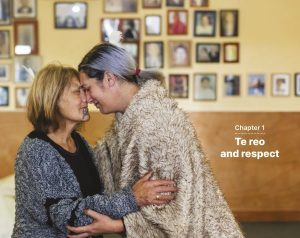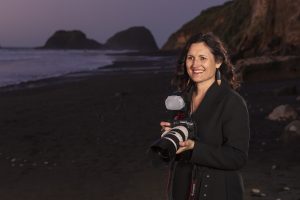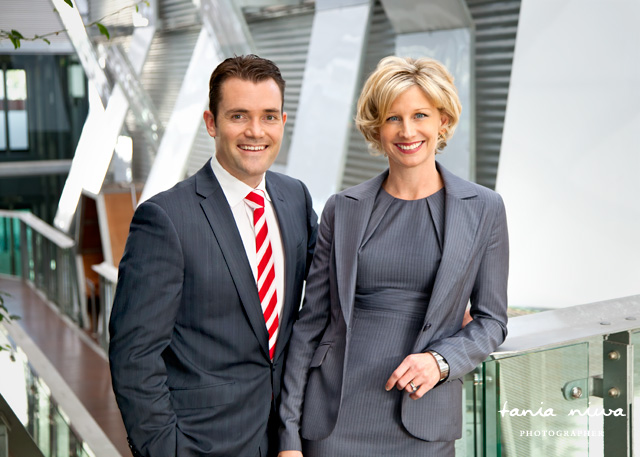
Michael Clarke and Cherie Humel, Owners and Business founders of Clarke and Humel Real Estate Manly, wanted a corporate portrait that would stand out.
The average Australian is exposed to thousands of advertising messages per day, so how do you cut through the advertising clutter and fatigue?
Mosman based marketing consultant, Felicity Fedele from Marketing Mélange, says “Consumers’ attention is becoming increasingly more difficult to grab with the amount of advertising noise that they are exposed to every day. The clever use of a striking image is one way to draw consumers to your message, if nothing else but to satisfy their curiosity.”
By using an eye-catching corporate portrait to draw in your audience, you will have a greater chance of successfully communicating your marketing message. To produce an effective business portrait include strategic use of photographic composition and design (line, shape, colour, texture, tone and space). This creates an aesthetically pleasing image and allows the viewers eye to rest amongst written copy. These elements can be incorporated into your portrait, regardless of whether it’s photographed in a studio with a plain backdrop, or on location with an interior or outdoor background.
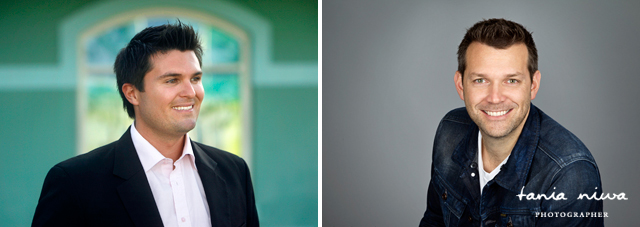
Here are some tips on how to incorporate some compositional and design elements into your corporate portraits:
- Clothing – whilst your clothing choice should be appropriate to the business or industry, select items with consideration to colour, texture, tone and how it will visually complement the chosen backdrop.
- Pose – whilst certain poses will be flattering, also be mindful of subliminal lines that are created by the position of the body (ie. the neck, shoulders and arms). The viewer’s eye is drawn around the photograph by these lines, which should form a smooth flow from one line to the other, and encourage the viewer to stop and look at the photograph longer. For example, if photographing a head and shoulder portrait, twisting the body slightly away from the camera with one arm slightly bent, and a slight tilt of the head often creates subliminal lines that draw the eye in a circular direction around the image. The positioning of the body should be subtle and slight to create a natural stance.
- Background (location) – select a relevant background that provides interesting and harmonious elements of colour, texture, lines, patterns, repetition or space. These may include parts of a building’s architectural features or a building’s materials, the colours created by a lobby’s lighting, or simply the lines and patterns created by shadows, stairs,windows or railings.
- Backdrop (plain) – Studio portraits that require a plain coloured backdrop may still be created with an interesting aspect. Adjusting the lighting on the subject or the backdrop, creates a variation with tone and colour in the shadows or highlights. The pose of the subject should have a strong consideration to create an interesting photograph.
- Angle of the photograph – photographing from an angle other than eye-level to the subject can alter the result and effect of the background dramatically but be careful that an unflattering angle is not taken of the subject. Move around and see what works through the lens.
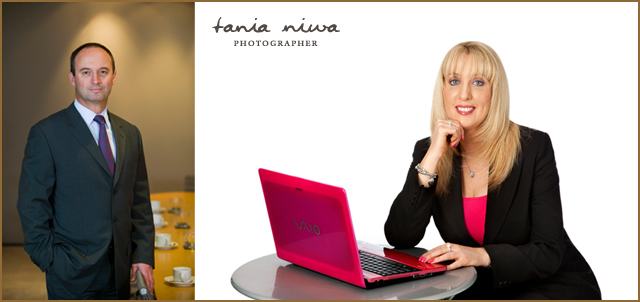
We recently photographed corporate portraits of Michael Clarke and Cherie Humal, owners and business partners of Clarke and Humal Real Estate, Manly. Cherie’s background and qualifications in architecture influenced her decision to chose a photographer who had a strong creative approach. Tania Niwa had previously photographed Cherie’s daughter as a toddler and Cherie was happy with the creative result, therefore she was confident in using Tania for her business portraits. This photo shoot was located in the atrium of an office foyer, which provided a background of interesting architectural elements, shadows and tones that worked harmoniously with their attire. The effect draws the viewers eye around the image to their faces and create an interesting element of difference.
From a marketing perspective, there are other considerations to factor into corporate portraiture, such as the relevancy of the clothing, poses, background and location to the marketing message and all the subconsious messages that are communicated by these.
Awareness of the compositional and design elements of a commercial portraiture image will help successfully communicate the marketing message by grabbing the targeted audience’s attention and enticing them to read on.
For information on corporate portraits or photography workshops by Tania Niwa, please contact the studio on 02 9939 5553 or [email protected].

